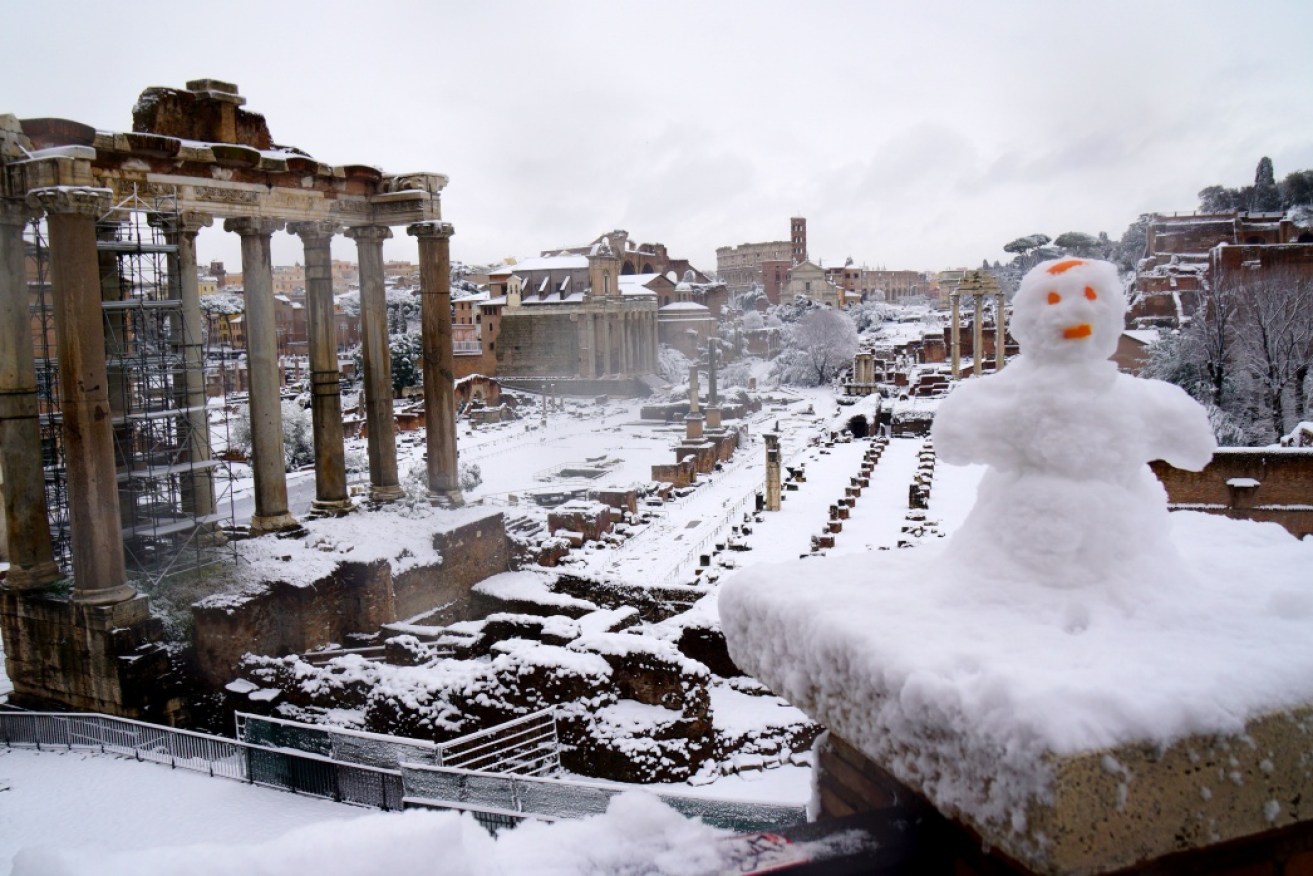North Pole warming sends Arctic blast into Europe


The Roman forum is blanketed with snow. Photo: Getty
A freak warming around the North Pole is sending a blast of Arctic cold over Europe in a sign of “wacky” weather that may happen more often with man-made global warming, scientists say.
But the pole itself is warmer than usual, alarming climate scientists.
On the northern tip of Greenland, the Cape Morris Jesup meteorological site has had a record-smashing 61 hours of temperatures above freezing so far in 2018, linked to a rare retreat of sea ice in the Arctic winter darkness.

Shoppers brave the snow in the English town of Leominster, Herefordshire. Photo: Getty
“It’s never been this extreme,” said Ruth Mottram, a climate scientist at the Danish Meteorological Institute.
Warmth was coming into the Arctic both up from the Atlantic and through the Bering Strait, driving and cold air south.
Around the entire Arctic region, temperatures are now about 20C above normal, at minus 8C, according to DMI calculations.
The northernmost permanent weather station in the world, just 440 miles from the North Pole, has warmed to 43°F today — in the middle of months-long darkness during what is normally the coldest time of the year.
This is simply shocking. I don't have the words. https://t.co/ynX0IkkuAn
— Eric Holthaus (@EricHolthaus) February 24, 2018
To the south, a rare snow storm hit Rome on Monday and some Brussels mayors planned to detain homeless overnight if they refused shelter with temperatures set to fall as low as minus 10C in the coming week.
Rome’s Mediterranean climate and proximity to the sea usually result in mild winters, such that restaurants often keep outdoor seating open even through the coldest months of the year, but instead schools were closed and public transport services reduced

The Roman coliseum during the rare snowfall in Rome. Photo: Getty
Hit by easterly winds from Siberia, cities from Warsaw to Oslo were colder than minus 8C.
As long ago as 1973, a study suggested that an ice-free Arctic Ocean could make regions further south colder.
That “warm Arctic, cold continent” (WAC#C) pattern is sometimes dubbed “wacc-y” or “wacky” among climate scientists.

Hanging in there? Dogs greet each other during a snow storm at the Arch of Constantine in Rome. Photo: Getty
“Wacky weather continues with scary strength and persistence,” tweeted Professor Lars Kaleschke, a professor at the University of Hamburg.
Scientists say a long-term shrinking of sea ice on the Arctic Ocean, linked to global warming, exposes warmer water below that releases more heat into the atmosphere.
Cape Morris Jesup (#Greenland's northernmost observation station) is now reporting temperatures well above freezing today… +6.1°C at the latest observation! Crazy!
Station is provided by @dmidk at https://t.co/kedfPPAg9q. pic.twitter.com/wEcs4B61mo
— Zack Labe (@ZLabe) February 24, 2018
That in turn may be disrupting the high altitude jet stream.
“The jet stream becomes wavier, meaning that colder air can penetrate further south and warmer air further north,” said Nalan Koc, research director of the Norwegian Polar Institute.
Arctic Ocean sea ice is at a record low for late February at 14.1 million square km, according to the US National Snow and Ice Data Centre.
That is about a million less than normal, or roughly the size of Egypt.
-With AAP








